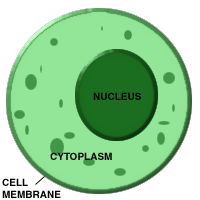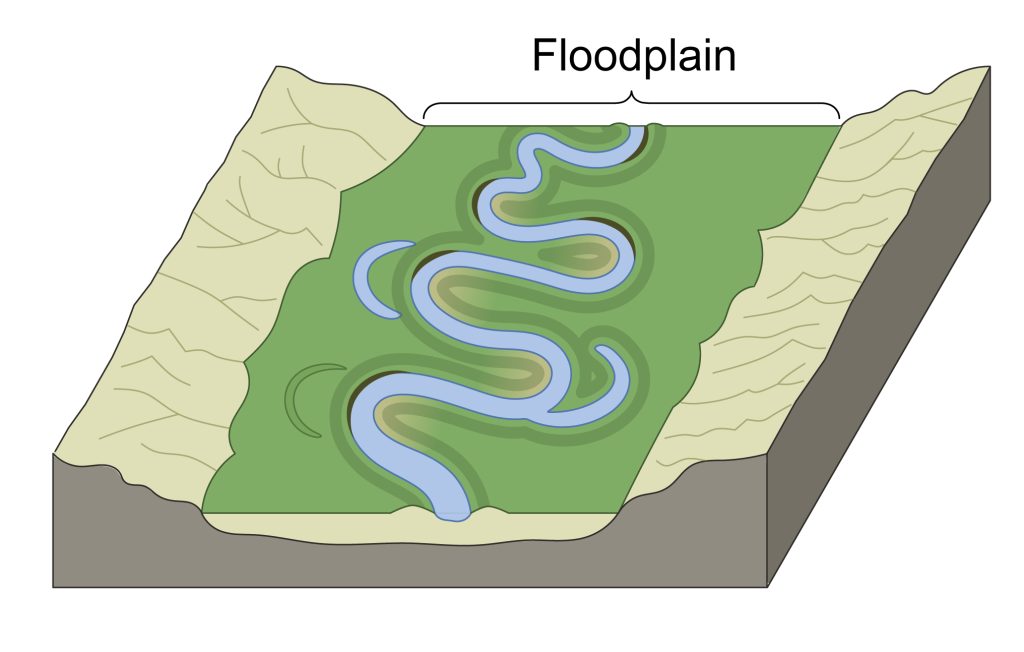A scientist plans to make models of three kinds of cells: oak leaf, squirrel muscle, and fern leaf.
Which model(s) will have organelles that contain chlorophyll?
A. only the fern leaf cell
B. only the squirrel muscle cell
C. the fern leaf cell and the oak leaf cell
D. the oak leaf cell, the squirrel muscle cell, and the fern leaf cell
C. the fern leaf cell and the oak leaf cell (only plant cells have chlorophyll)
A student has a sore throat and goes to the doctor. The doctor sends the student home with a medicine called an antibiotic. Which kind of microorganism caused the student's sore throat?
A. algae
B. virus
C. fungus
D. bacteria
D. bacteria (antibiotics are only used to treat bacterial infections)
What is a sign of a chemical change?
A) The object changes shape
B) The object gets smaller
C) A new substance is formed
D) The object melts
C. a new substance is formed
Winds blow aceoss the desert. Which landform will MOST LIKELY form where the winds slow down?
A. dune
B. delta
C. mountain
D. floodplain
A. dune
A student is making an electrical circuit. She needs one more part--wire. What will the wire do?
A. open and close the circuit
B. supply the electric current
C. allow electric current to flow through the circuit
D. convert electrical current to flow through the circuit
C. allow electric current to flow through the circuit
Which statement about cytoplasm is true?
A. only animal cells have cytoplasm
B. Cytoplasm surrounds and protects cells
C. Plant cells use cytoplasm to carry out photosynthesis
D. Cytoplasm is a liquid that fills the space around a cell's nucleus and other ogranelles.
D. Cytoplasm is a liquid that fills the space around a cell's nucleus and other ogranelles.

How are bacteria beneficial? Select THREE ways.
A. they are decomposers
B. they live in raw eggs and raw meat
C. They help some animals digest food
D. they are the main producers in oceans and lakes
E. They live on plant roots and make nutrients that the plants need
A. they are decomposers
C. They help some animals digest food
E. They live on plants roots and make nutrients that the plants need
Which of these actions will cause a chemical change?
A. burning a substance
B. evaportating a substance
C. dissolving one substance in another substance
D. mixing two different states of the same substance
A. burning a substance (When something burns, it reacts with oxygen, leading to the creation of new compounds, such as carbon dioxide, water, and ash)
A scientists studies volcanic eruptions.
Which observation is the BEST evidence to support the argument that volcanic eruptions are constructive processes?
A. hot gases escape from volcanos
B. Lava flows out of volcanos and piles up
C. Plants and animals die during volcanic eruptions
D. The top of a volcano blows off during an eruption
B. Lava flows out of volcanos and piles up (Constructive processes are forces that build up landforms, creating new features or modifying existing ones)
Which part of a circuit converts electrical energy into another form of energy?
A. wire
B. switch
C. battery
D. light bulb
D. light bulb (converts it into heat and light energy)
A student observes a school tree during the year. The tree has flowers in the spring. The tree loses its leaves in the fall.
How should the student classify this tree?
A. spore producer and tree
B. seed producer and deciduous tree
C. coniferous plant and evergreen tree
D. flowering plant and coniferous trees
B. seed producer and deciduous tree (flowers produce seeds and deciduous trees shed their leaves seasonally)
What type of microorganism is mold?
A. virus
B. fungi
C. bacteria
B. fungi
A student needs to separate a mixture of tiny dirt particles and water. Which would be the BEST tool or tools for separating the mixture?
A. strainer
B. pan balance
C. filter paper and funnel
D. tweezers and magnifying glass
C. filter paper and funnel (when you use both, they create a practical setup for filtering. The water is poured into the funnel, and the dirt particles are caught by the filter paper)
Which statement describes how deposition builds up the surface of a floodplain?
A. lava flows from a volcano and piles up
B. Rainwater seeps into the ground and freezes
C. A river flows over its banks and slows down
D. A river slows down as its flows into the ocean

C. A river flows over its banks and slows down (sediment is laid down when the river overflows which builds up the land along the river banks)
A student gets a shock when he touches a metal doorknob. Which of these events is caused by the same movement of electrons as the student's shock?
A. a toaster warms bread
B. a light bulb lights up a room
C. wind moves the blades of a fan
D. lightning strikes the top of a building
D. lightning strikes the top of a building (lightning is also a result of a buildup of electrical charge--static electricity-- in a cloud, which then discharges to the ground.
How do the seeds and spores of plants compare?
A. neither grows in soil
B. both occur in flowering plants
C. both are parts for reproduction
D. only seeds grow into new plants
C. both are parts for reproduction
WHich disease is caused by a virus?
A. E-Coli
B. the flu
C. salmonella
D. athelete's foot
B. the flu (hence why people get the flu vaccine)
During an investigation, a student observes bubbles forming in a substance. Which other observation would MOST LIKELY conifmr that a chemical change occured?
A. the substance takes up more space
B. the state of the substance changes
C. the color of the substance stays the same
D. the substance becomes warmed without being heated.
D. the substance becomes warmer without being heated (An increase in temperature without an external heat source is a common sign of a chemical reaction)
Which of these actions can best limit the erosion of coastal dunes?
A. planting grass on dunes
B. building groins across the dunes
C. removing animals from the dunes
D. moving sand from the ocean floor to the dunes
A. planting grass on dunes (the roots of the plants act as a net to hold the dune together. When wind blows sand across the beach and dunes, the sand hits the plants and collects around the base)
The students will use different objects to work as a conductor. Select THREE objects that will work.
A. iron nail
B. glass cube
C. plastic toy
D. copper penny
E. aluminum key
F. wooden pencil
A. iron nail
D. copper penny
E. aluminum key
What do vascular plants have that nonvascular plants do not?
A) Seeds
B) Flowers
C) Tubes to carry water and nutrients
D) Spores
C. tubes to carry water and nutrients
Which of the following is used to make yogurt?
A) Mold
B) Viruses
C) Bacteria
D) Algae
C. bacteria
A student drops some nails into a trashcan half filled with wood shavings. Which is a way to separate the mixture of nails and shavings?
A. sifting
B. flotation
C. evaporation
D. using a filter
B. flotation
Which statements about levees is true?
A. they limit coastal flooding
B. they prevent erosion of river banks
C. they allow deposition on floodplains
D. they help control flooding along rivers.
d. they help control flooding along rivers (Levees are built along rivers to contain floodwaters and prevent them from overflowing onto surrounding land. They are designed to raise the water level above the surrounding floodplain, thus controlling flooding)
Is water a good insulator?
true or false
False (electricity can go through water and it is extremely dangerous)